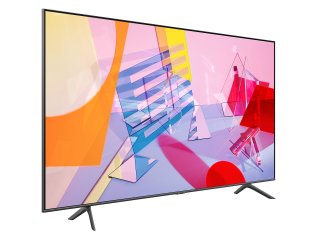How to Make Your Samsung QLED Deliver the Best HDTV Picture Possible
Because taking it out of the box and turning it on is so 1980s.
So, you’ve just brought home a brand new QLED TV. At first brush, setting things up may seem like a simple proposition: you take the panel out of the box (with at least one other person helping you, of course), plug everything in, and you’re off to the races. There are, however, caveats and best practices that you should consider at the outset to make the process go as smoothly as possible. With that in mind, here are some tips to help you get the best experience from your new QLED TV.
First, a quick note about the setup process. Many of Samsung’s QLED TV’s come with a One Connect Box--a passthrough hub that lets you connect cables to your TV without reaching for the back of your panel in order to do it. It’s a convenient future, but make sure to plan ahead when it comes to concealing the One Connect Box to minimize cable visibility; properly hiding the Box is especially important for those who plan on mounting their TV, rather than using the included stand.
Now that you’ve completed the physical setup, there are a number of settings that will help you get the best picture from your QLED TV. The most important of these is the picture presets, which may somewhat vary by manufacturer. ‘Dynamic’ mode is generally too far too vivid to be useful except in the brightest environments, while ‘Movie’ mode should only be enabled in a perfectly dark room. The best starting point is ‘Natural’ or ‘Standard’, as these two modes provide the most balanced contrast and brightness levels for most viewing setups.
From there, you’ll want to navigate to ‘expert settings’ for a wide range of tools to finetune your picture. ‘Backlight’ won’t have much of an effect, tint and gamma should almost never be changed, ‘Color’ is generally best left at 50% unless you’re a fan of purposely oversaturated colors, and ‘Contrast’ can be safely left on default. One setting that you will want to change is ‘Sharpness,’ which paradoxically blurs and obscures details beneath artificial enhancements; turn it down in small increments until you eliminate the undesirable halo effect accompanying high sharpness levels. If ‘Eco’ mode is set on by default, you’ll want to disable it to prevent your TV from automatically adjusting brightness. ‘Digital Clean View’ and similar noise reduction settings can be safely left on, but won’t make much of a difference except when viewing older cable TV, VHS, or DVD content. The next big setting to sort out is the Color Tone. Some will want to leave this on default, but many others will prefer a cooler or warmer picture to complement the ambient lighting of their room.
Modern flagship TV’s come equipped with several special modes. Some, like ‘Sports’ mode, are best left untouched. Others can be much more useful. ‘Gaming’ mode, for instance, is essential to cut down on input lag when playing video games on your TV. On Samsung TV’s, HDR+ replicates an HDR viewing experience for content that doesn't natively support HDR; your mileage may vary, but HDR+ can be a neat enhancement trick to make certain content more enjoyable.
These are the major settings that you’ll want to tinker with in order to get the best picture from your new QLED panel. Keep in mind that there are no ‘wrong’ setups, as you are the only judge of what looks best to you. Most importantly, don’t be afraid of experimentation--TV calibration is an ongoing process of trial and error.
Mark Episkopos is a frequent contributor to the National Interest and serves as a research assistant at the Center for the National Interest. Mark is also a Ph.D. student in History at American University.

